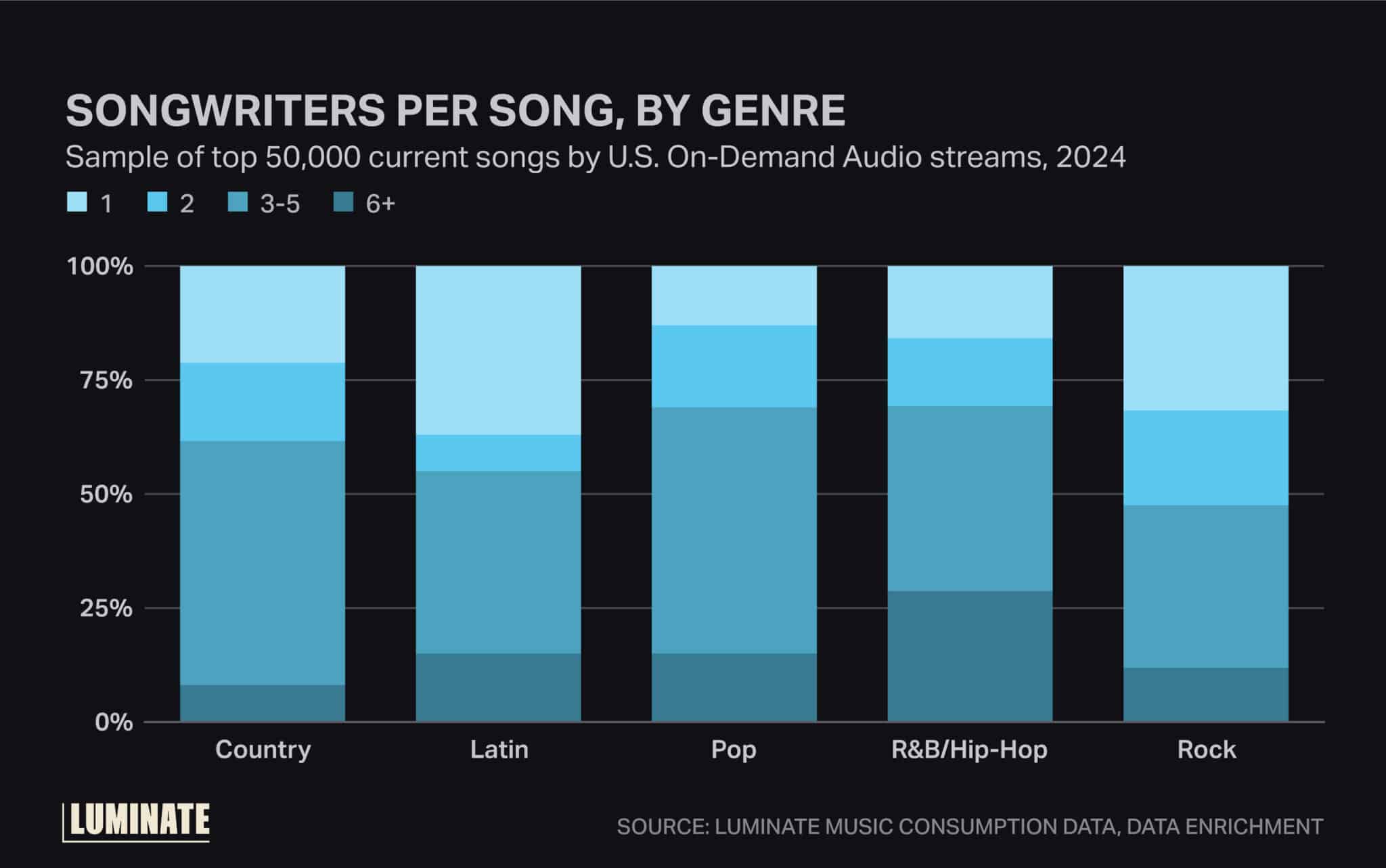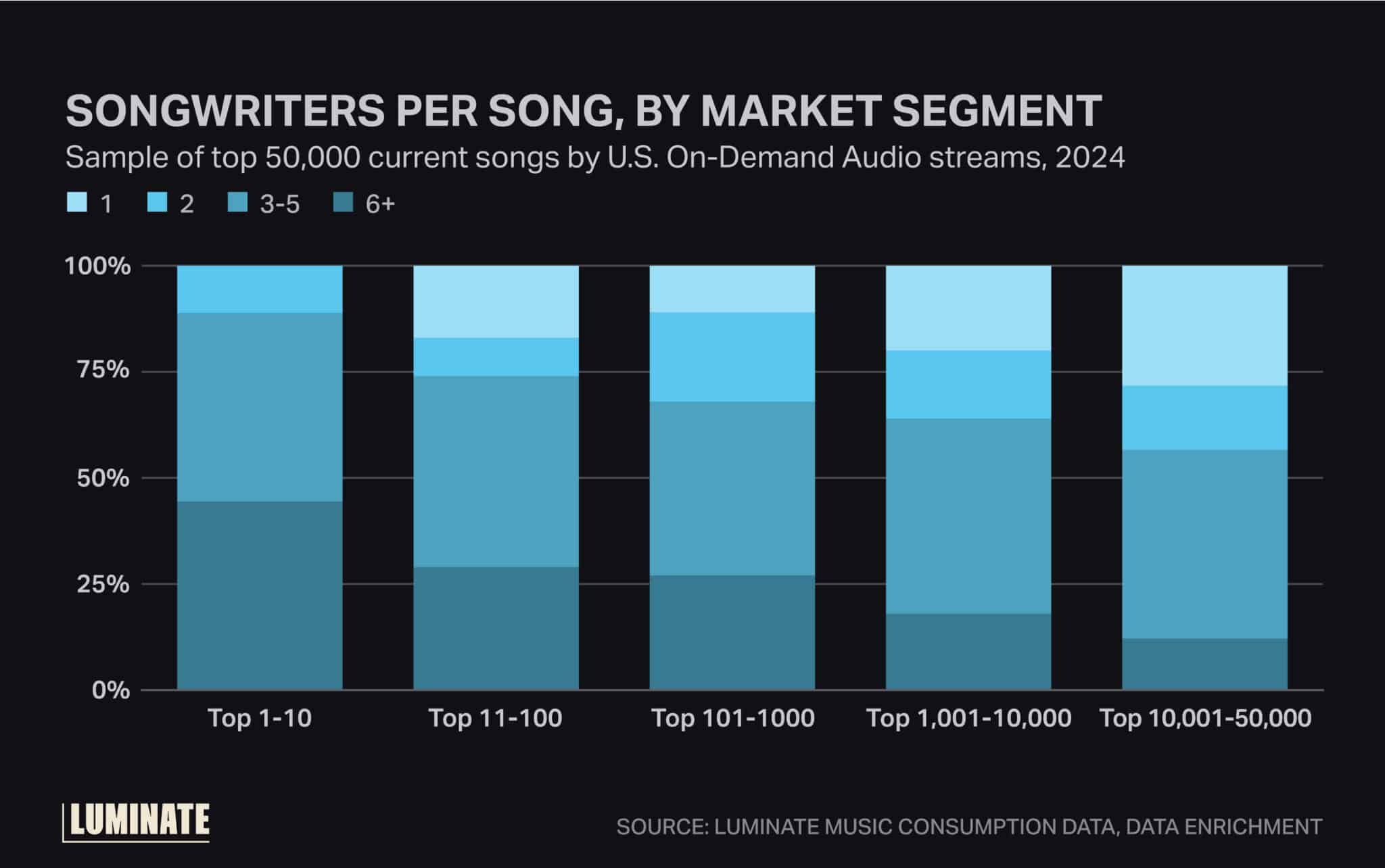How many people does it take to write a song?
Music history is stacked with familiar singer-songwriter titans, artists including Joni Mitchell and Bob Dylan, who wrote and performed much of their own music with very little collaboration. However, for most of the industry, composition requires more than one cook in the kitchen. And today, writing credits on a hit song may even read like an entire restaurant staff.
While it is inspiring to hear stories of a singular artistic vision managing the creation of a song from start to finish, this is not diminished by the fact that in reality, most popular music is the result of many talented artists working together. And thanks to songwriter and composition data from a 2024 Luminate acquisition, we can see just how many people are behind the hits.
Looking at stats for the top 50,000 current (released within the past three years) songs based on U.S. On-Demand Audio streams in 2024, all of the top 10 songs of the year were written by at least two people.
In a statistically significant, randomly selected sample of over 100 songs across the U.S. market per genre, pop is the least likely to have been written by only one person, with only 13% of songs having a single credit. Additionally, 29% of R&B/hip-hop songs have over six writers credited. On the other end of the spectrum, Latin and rock are much more likely to have been penned by only one person.

Why is this the case? The answer may partly be good old-fashioned tradition.
Pop music as we know it today was born in the offices of Manhattan’s Tin Pan Alley and the Brill Building, where songwriting teams churned out some of the earliest pop hits put to wax in the 19th and early-20th centuries. Rock, meanwhile, is a genre rooted in the idea of authenticity: As icons such as Dylan and the Beatles became superstars in the 1960s, bucking the notion that artists needed career writers to make hits, rock developed a reputation as the raw, honest antithesis to pop’s polished pomp.
Hip-hop is also a genre that values authenticity — rappers not writing their own bars is considered a cardinal sin to this day — but one of its traditions is the use of samples and interpolations of existing songs in beats, which can quickly become a licensing minefield and often result in an extended credits list of writers.
Of course, it’s also worth noting that as rock and hip-hop became massive popular genres in their own right, they inevitably adopted some popisms as production values and budgets increased. On that note, economics certainly have an impact on music creation, as the number of songwriters changes depending on where in the long tail of the market a song lives.
As mentioned, none of the aforementioned top 10 songs were done by just one songwriter, whereas within the top 10,000-50,000 segment of the market, it’s far more likely to be a single scribe. This likely speaks to the fact that independent artists often don’t have the resources of a large songwriting team.

For industry stakeholders, these songwriting trends have important implications. On one hand, higher writer counts lead to increasingly complex publishing splits, which can be a daunting task for rights management teams to untangle. But by knowing these hard data patterns, having a working knowledge of a given genre’s values and understanding an artist’s individual goals, those on the A&R side of the business can make informed decisions and better set up artists and writers for success.
Ultimately, a shift toward collaboration is not a sign of diminished artistry — it’s both an evolution of traditions and a reflection of how songs are built in today’s ecosystem: faster, more globally and across creative disciplines.
Contact us to learn more about our Data Enrichment product.
